Fantha Tracks writers give their responses, initial gut feelings, deep dives and thoughts on the nine episode debut season of Star Wars: Visions. Beware of spoilerific elements in here.
Carl Bayliss
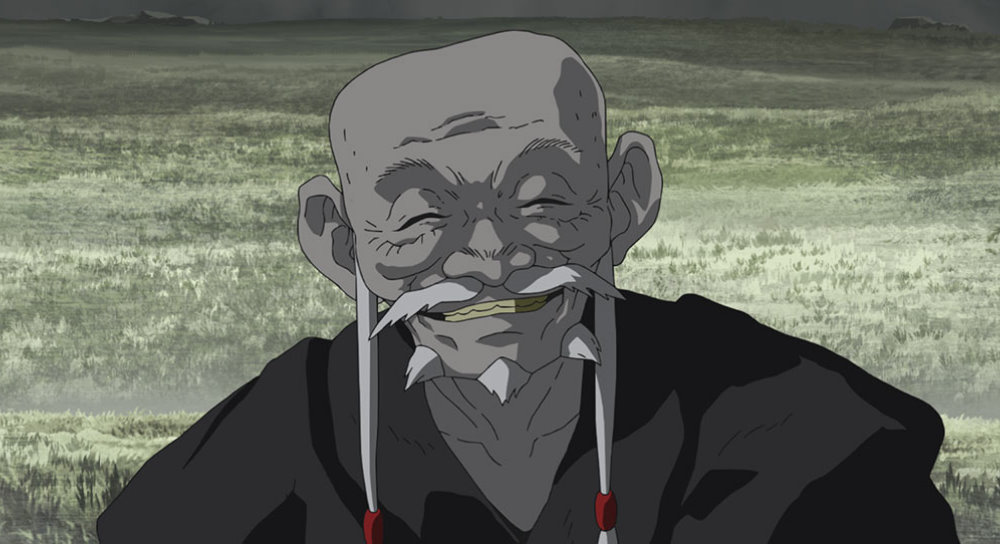 When a young George Lucas first saw the films of legendary director Akira Kurosawa so began a love affair that would permeate his future works, especially the good vs evil space fantasy film ‘The Star Wars’. With the samurai-esqe Jedi and their lightsabers to the portrayal of the ‘storytellers’ Artoo and Threepio and beyond we get many nods to not only the work of Kurosawa but other ancient mythologies too.
When a young George Lucas first saw the films of legendary director Akira Kurosawa so began a love affair that would permeate his future works, especially the good vs evil space fantasy film ‘The Star Wars’. With the samurai-esqe Jedi and their lightsabers to the portrayal of the ‘storytellers’ Artoo and Threepio and beyond we get many nods to not only the work of Kurosawa but other ancient mythologies too.
However over the intervening 40+ years, and for a variety of reasons, Star Wars has never really been taken to the hearts of the masses as it has done elsewhere in the world. Herein lies what I believe is one of the underlying motives for the latest animated series to come to Star Wars via Disney+, Visions. By telling stories in celebrated and much-loved animation styles the Japanese market is being opened up to the galaxy far, far away in a new and refreshing way, and not by simply rehashing the existing stories.
So, we get 9 different animation studios delivering their take on Star Wars, and both they and Lucasfilm will be hoping that it is a big success in both the Japanese and wider global markets.
I think comparing the different styles is unfair on the studios as each offers it’s own identity (although I’m not enough of an animation expert to know if the style is typical of the work from each), but suffice to say even in these short stories (around 20 minutes per episode) we get some fantastic stories, none of which directly link to existing characters, or indeed each other.
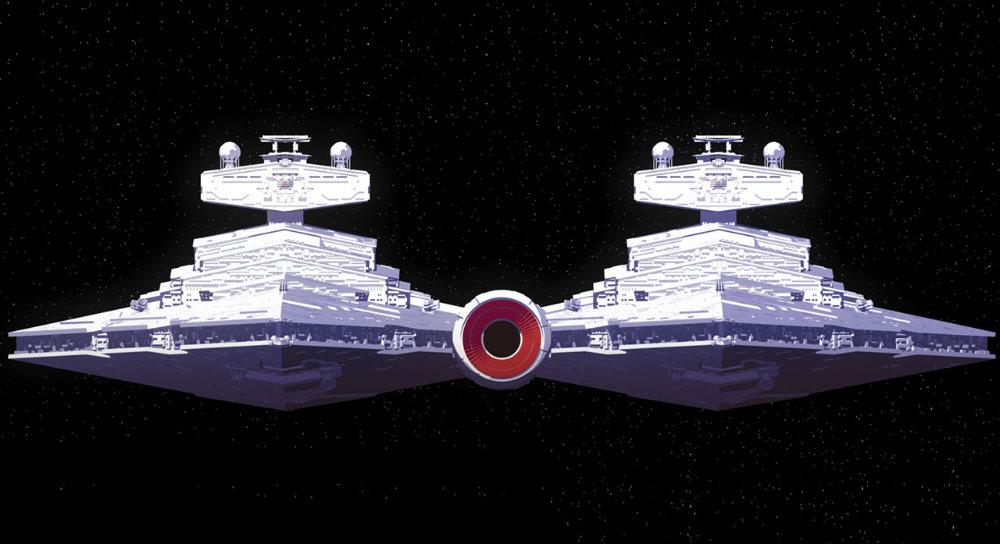 The visuals are truly breathtaking – from almost black and white, pen sketch-style to bold, colourful more traditional animation, and many of these characters will already have found their way into established Star Wars fans hearts. There are also elements familiar to existing fans, with Star Destroyers, lightsabers, droids, speeders and even a repurposed AT-AT body being used as a tank! There are also several scenes which have been almost identically re-told (the Holdo manoeuvre in particular) or settings (the pod-race arena on Tatooine) which I think further enforces the fact that these shorts are designed to pull in an audience not already familiar with the main saga.
The visuals are truly breathtaking – from almost black and white, pen sketch-style to bold, colourful more traditional animation, and many of these characters will already have found their way into established Star Wars fans hearts. There are also elements familiar to existing fans, with Star Destroyers, lightsabers, droids, speeders and even a repurposed AT-AT body being used as a tank! There are also several scenes which have been almost identically re-told (the Holdo manoeuvre in particular) or settings (the pod-race arena on Tatooine) which I think further enforces the fact that these shorts are designed to pull in an audience not already familiar with the main saga.
The sound effects also seem to borrow heavily from the existing universe with many sounding like they’ve been lifted directly from the existing ‘source material.
Music has always been key to Star Wars storytelling, and the original scores in ‘Visions’ are beautiful and continue the trend. Again with an air of familiarity for existing fans, but never lifting the Williams themes directly. As a musician one of my favourites is the rock opera “Tatooine Rhapsody”, but I found something in every episode that I really enjoyed – virtually every one is almost a pilot for a longer run or other stories in books or comics.
If this is a ‘Vision’ of one of the ways we’ll see more Star Wars, then I’m well and truly on board!
Ross Hollebon
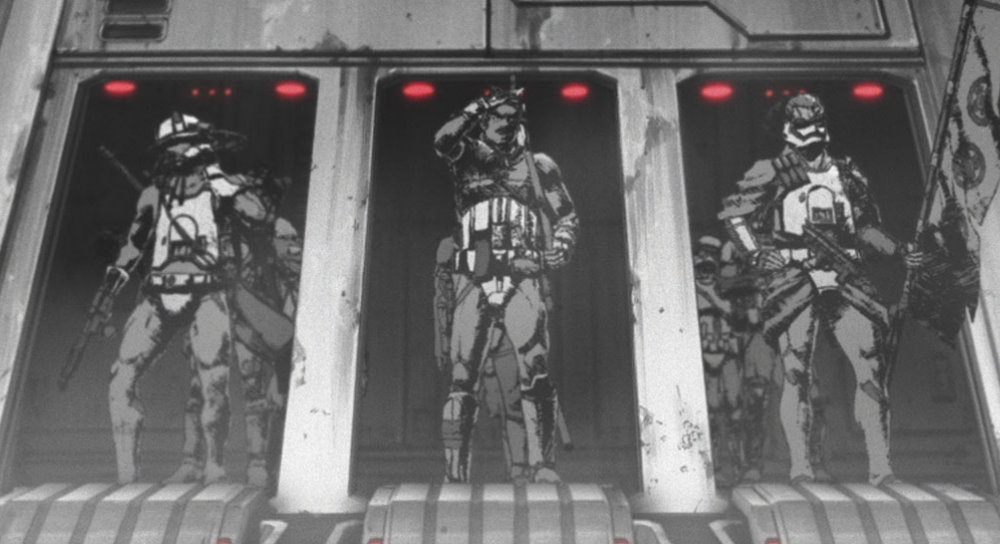 The storytelling and anime art forms were as diverse as the scum and villainy of the Mos Eisley spaceport during the Empire’s reign—and I really enjoyed the collection of nine episodes because of it. The nonuplet set reminded me of a new album by any familiar favorite rock band—the first listen through you know something is special but you can’t quite commit to a favorite. The second pass helps them all become familiar and you shuffle closer toward a couple tracks you plan to become great friends with, all the while knowing in a month or a year you might have a new current favorite. For my honeymoon phase of this release I’m committing to three initial favorites—even though I did enjoy each story and piece of art.
The storytelling and anime art forms were as diverse as the scum and villainy of the Mos Eisley spaceport during the Empire’s reign—and I really enjoyed the collection of nine episodes because of it. The nonuplet set reminded me of a new album by any familiar favorite rock band—the first listen through you know something is special but you can’t quite commit to a favorite. The second pass helps them all become familiar and you shuffle closer toward a couple tracks you plan to become great friends with, all the while knowing in a month or a year you might have a new current favorite. For my honeymoon phase of this release I’m committing to three initial favorites—even though I did enjoy each story and piece of art.
 Episode 1: “The Duel” was my favorite with amazing pacing and the limited use of color truly making it pulse-pounding at times. The Akira Kurosawa influence was a wonderful tribute to not only that celebrated Japanese director but also the influence his Samurai films had on George Lucas. The primary protagonist (Ronin) and antagonist (Kouru) both carry Sith red lightsabers, causing some wonderful confusion—especially as she rocks her red wheel of death, all while killing it with stiletto heels. Part Aeon Flux, part Asajj Ventress, and part Dark Rey, the villain made the story so much more wicked and thrilling.
Episode 1: “The Duel” was my favorite with amazing pacing and the limited use of color truly making it pulse-pounding at times. The Akira Kurosawa influence was a wonderful tribute to not only that celebrated Japanese director but also the influence his Samurai films had on George Lucas. The primary protagonist (Ronin) and antagonist (Kouru) both carry Sith red lightsabers, causing some wonderful confusion—especially as she rocks her red wheel of death, all while killing it with stiletto heels. Part Aeon Flux, part Asajj Ventress, and part Dark Rey, the villain made the story so much more wicked and thrilling.
It stayed in order for my second favorite as Episode 2: “Tatooine Rhapsody” brought emo/punk to the Star Wars universe. You can’t tell me young Luke Skywalker, trapped on a Tatooine moisture farm as a teenager, wasn’t aching for this music. Great cameos, an amazing group of guest voice actors, and nod after nod to special places, moments, and characters throughout the film saga made this special.
Ep. 7: “The Elder” rounds out my top three. The relationship between the Jedi and the Padawan is intriguing and fun but expected. But the old man, the dark warrior, is the epitome of evil and I see characters like him as more sinister than Darth Vader and Emperor Palpatine. A merciless, heartless, bringer of intimidation, torment, and death, he is the random haunting that epitomizes being in the wrong place at the wrong time.
Becca Benjamin
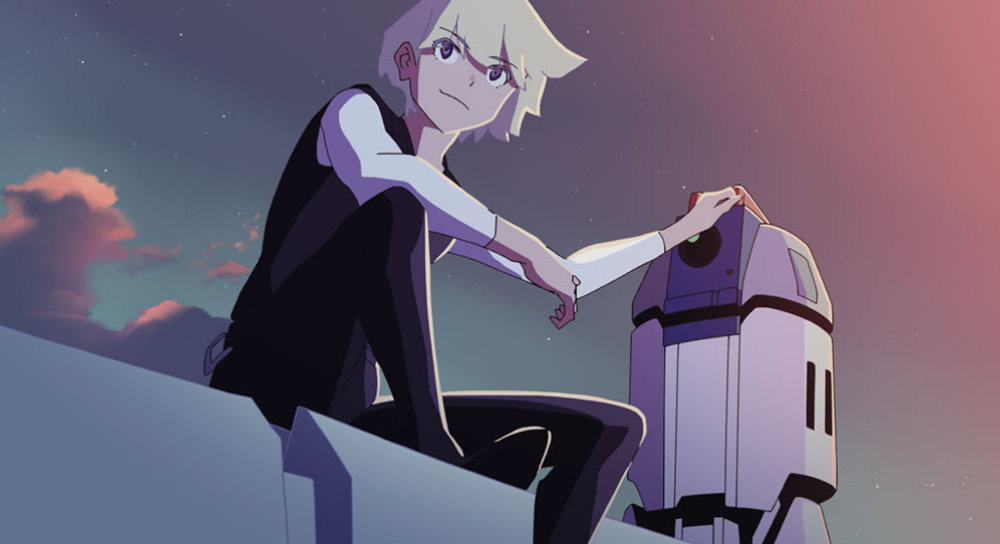 Star Wars: Visions, an anime anthology set in a galaxy far, far away, is a love letter to Star Wars in the form of what inspired and influenced George Lucas from the beginning of its creation, the Akira Kurosawa films.
Star Wars: Visions, an anime anthology set in a galaxy far, far away, is a love letter to Star Wars in the form of what inspired and influenced George Lucas from the beginning of its creation, the Akira Kurosawa films.
The culture, the lore, and the honor, infused with the anime art style, coloration, dramatic emphasis, and the musical composition, adds a refreshing visual take with a cultural melody that “only” deepens the thematic elements that make Star Wars a Star War.
In addition to all that, Star Wars: Visions carries on the tradition that Lucas instilled since 1977 with the original Star Wars, the necessity of wanting to know “what comes next?” Ambiguity. The craft of leaving the audience to wonder about what happens next and yet, marvel at what they just experienced. It’s that ingenuity that has enabled Star Wars to thrive for well over forty years. And hopefully, with any luck, it will continue to do so for another forty or more. After all, there’s always room for more legends in a galaxy far, far away.
Eric Onkenhout
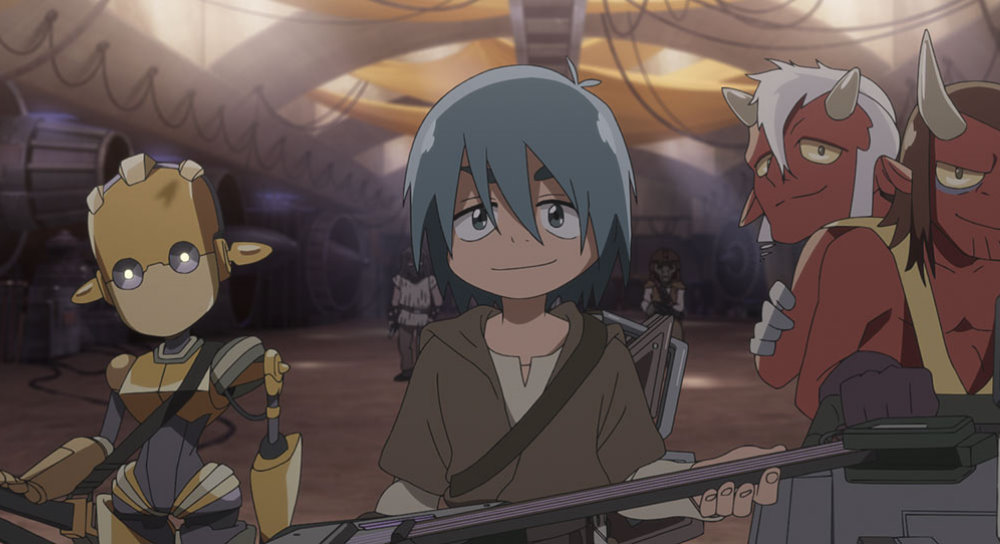 From the first announcement, I knew Star Wars: Visions was going to be unique. So what could be more natural than marrying Star Wars with Japanese anime? It’s common knowledge, at least it should be, that Star Wars and George Lucas were heavily influenced by Akira Kurosawa and Jedigaiki movies. In fact, bringing this up feels like beating a dead horse. Adding to that, Dave Filoni’s experience in working on Avatar: The Last Airbender, a top-rated American anime series that aired for three seasons (2005-2008) on Nickelodeon. And the anime-inspired Star Wars: Resistance (2019) that ran for two seasons on Disney Plus.
From the first announcement, I knew Star Wars: Visions was going to be unique. So what could be more natural than marrying Star Wars with Japanese anime? It’s common knowledge, at least it should be, that Star Wars and George Lucas were heavily influenced by Akira Kurosawa and Jedigaiki movies. In fact, bringing this up feels like beating a dead horse. Adding to that, Dave Filoni’s experience in working on Avatar: The Last Airbender, a top-rated American anime series that aired for three seasons (2005-2008) on Nickelodeon. And the anime-inspired Star Wars: Resistance (2019) that ran for two seasons on Disney Plus.
So yes, Star Wars: Visions may be the first direct link between the two, but they certainly are not complete strangers. More like acquaintances who met briefly at Canto Bight and agreed to work together when the time is right. Anyway, other than a few moments that I noted, I won’t get too specific with my review simply because all nine episodes dropped at once, and despite their short running time, it is a load to take in all at once.
Starting with The Duel. The Duel is quintessential Kurosawa. If Kurosawa did anime, this is what it would look like. A couple of days before Visions aired, I watched Yojimbo, and I immediately recognized the music in The Duel being very similar to the music from Yojimbo. I really appreciated that. The music of Star Wars is just as important to me as the films. As George said, it’s 50% of the experience. Also, the chorus reminded me of the Train Heist chorus from Solo: A Star Wars Story, which happens to be my favorite use of vocals in Star Wars. Lastly, the use of black & white reminded me a lot of the manga Lone Wolf & Cub, which you may have heard influenced parts of The Mandalorian.
Tatooine Rhapsody was so different from anything I’ve ever seen in Star Wars. It’s essential not to take Star Wars so seriously that it becomes a drag. In that regard, Tatooine Rhapsody plays an integral part in that it’s just plain fun. And who doesn’t love some Star Wars rock music?
The Twins was an overload of colors and in-your-face nonstop action from start to finish. I loved the reference to a galaxy far, far away, and the droid, R-DUO, was a neat take on R2. Duo meaning two.
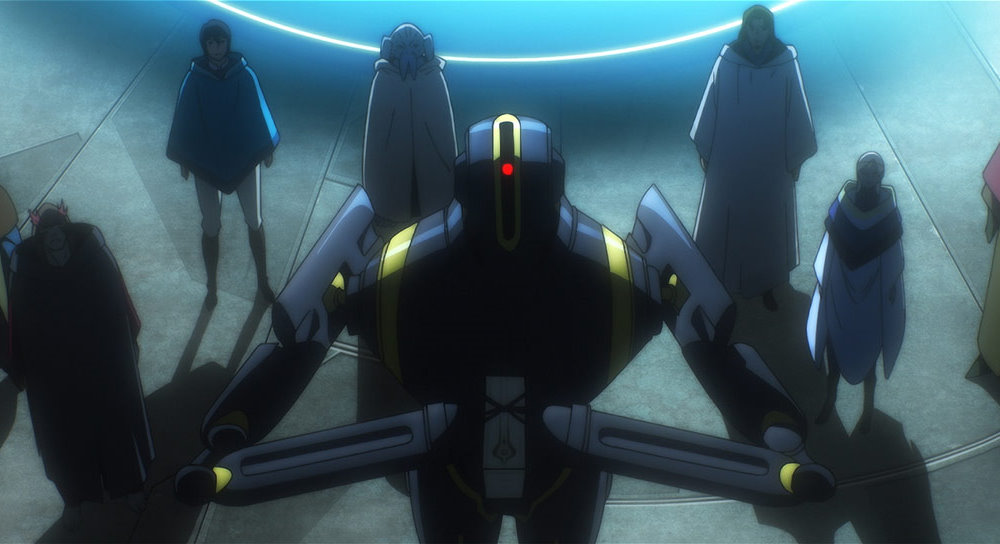 The Ninth Jedi: I loved the idea of a colorless lightsaber that changes with your connection to the Force. Something like that could easily fit into canon. If a Jedi can heal a crystal, and if a Sith can make it bleed, why can’t it change according to your connection? Also, I loved how the lightsaber handle has a sigil very similar to Ashoka’s engraved into the handle.
The Ninth Jedi: I loved the idea of a colorless lightsaber that changes with your connection to the Force. Something like that could easily fit into canon. If a Jedi can heal a crystal, and if a Sith can make it bleed, why can’t it change according to your connection? Also, I loved how the lightsaber handle has a sigil very similar to Ashoka’s engraved into the handle.
T0-B1 may not be the most thought-provoking or lore-heavy, but I don’t care; it’s my favorite episode of Star Wars: Visions. At its core, it’s Star Wars Pinocchio. It’s about a young android boy who dreams of becoming a Jedi and defeating evil. How much more Star Wars can you get? It’s so fantastical and innocent with heavy nods towards Moebius, another one of Lucas’ influences.
The Elder began a bit slow-moving with lots of dialogue in the beginning. It reminded me a lot of how Qui-Gon and Obi-Wan would be in Master and Apprentice. However, The Elder slowly builds to a climactic finish which is excellent. I really enjoyed this one as well.
Lastly, in my notes, I had Akakiri, which reminded me of Kurosawa’s Hidden Fortress with the two comedic characters who influenced C-3PO and R2-D2. There isn’t a bad episode in the group. I really enjoyed them all and I hope there will be a second season two.
I get why so many are really intrigued by all the lore in Visions. Star Wars canon with Japanese mythology and culture—it’s definitely going to have a billion details that fans will want to speculate and discuss. And that’s great! For me, I’m most excited about the direction Lucasfilm took to make this happen. I appreciate that they are interested in exploring non-canon stories and letting creators explore Star Wars in a way that means something to them. I believe George wanted different interpretations of Star Wars after he retired.
Mark Mulcaster and Mark Newbold discuss Star Wars: Visions season one on Episode 108 of Making Tracks
- Hardcover Book
- Candon, Emma Mieko (Author)
- English (Publication Language)
- 352 Pages - 10/12/2021 (Publication Date) - Random House Worlds (Publisher)


